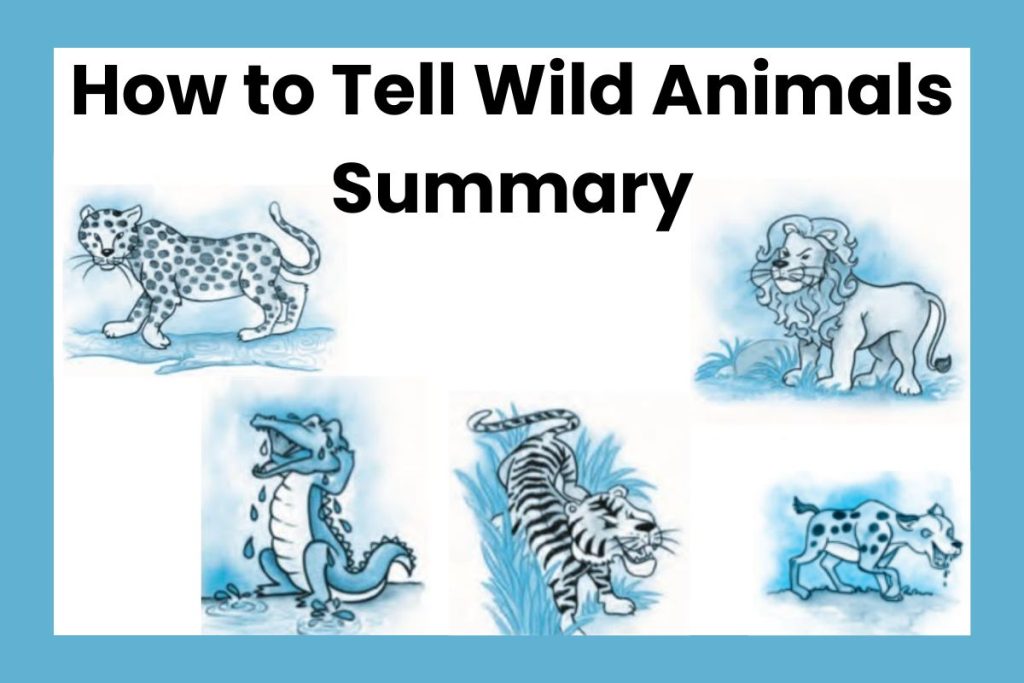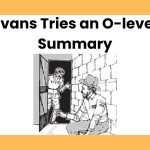How to Tell Wild Animals Summary: Central Board of Education has included the poem “How to Tell Wild Animals” by Carolyn Wells in the Class 10 English Exams syllabus. The students need to read the poem and prepare for questions. If you are also preparing for Board Exams and have to study this chapter, read the following article for a detailed summary of the poem.

How to Tell Wild Animals Summary?
The poem “How to Tell Wild Animals” is written by Carolyn Wells and is extremely funny. The questions in the exams can be asked regarding the various ways in which the poet describes the animals, the animals mentioned in the poem, the difference between explanations, and others. For any kind of questions, the students must be prepared with the gist of the poem.
For the same, they must read How to Tell Wild Animals Summary so that they can prepare for any kind questions about the events in the poem.
Two Stories about Flying Summary Class 10 English
“How to Tell Wild Animals” by Carolyn Wells
If ever you should go by chance
To jungles in the east;
And if there should to you advance
A large and tawny beast,
If he roars at you as you’re dyin’
You’ll know it is the Asian Lion…
Or if some time when roaming round,
A noble wild beast greets you,
With black stripes on a yellow ground,
Just notice if he eats you.
This simple rule may help you learn
The Bengal Tiger to discern.
If strolling forth, a beast you view,
Whose hide with spots is peppered,
As soon as he has lept on you,
You’ll know it is the Leopard.
’Twill do no good to roar with pain,
He’ll only lep and lep again.
If when you’re walking round your yard
You meet a creature there,
Who hugs you very, very hard,
Be sure it is a Bear.
If you have any doubts, I guess
He’ll give you just one more caress.
Though to distinguish beasts of prey
A novice might nonplus,
The Crocodile you always may
Tell from the Hyena thus:
Hyenas come with merry smiles;
But if they weep they’re Crocodiles.
The true Chameleon is small,
A lizard sort of thing;
He hasn’t any ears at all,
And not a single wing.
If there is nothing on the tree,
’Tis the chameleon you see.
Summary of the Poem
The Poem, “How to Tell Wild Animals” by Carolyn Wells is a poem of humour where she suggests the readers indulge in dangerous confrontations in order to identify the wild animals. She starts the very first stanza by declaring, “If ever you should go by chance To jungles in the east”. She begins by explaining that if the reader happens to meet an animal roaring and if they die out of fear, it is the Asian Lion.
Further, she explains that if there is another animal that is yellow but is covered with majestic black stripes and it eats the reader, then it is the Bengal Tiger. The next animal introduced is the Leopard which is donned by spots on the skin. If it jumps at the reader and tears them, it shall be easy to identify and confirm. She mentions that the Leopard will continue pouncing and there is no way by which a cry for help can be useful. Hence, the reader must be extremely careful.
In the next stanza, the poet pictures the yard of the reader where an animal comes and hugs them. She that the animal is a Bear and the identity can be confirmed by the fact that it shall embrace them once again till they die.
Dust of Snow Summary Class 10 English
The poet creates a differential statement for identifying Crocodiles and Hyenas. She mentions that the former will shed tears while it will eat the reader while the latter will laugh as it will swallow. The laugh of Hyenas resembles that of humans.
In the last stanza, the poet explains how readers can identify a chameleon. She describes that the animal is like a small garden lizard and does not have ears and wings. She suggests to the readers that if they are unable to see anything on a tree then there are complete chances that a chameleon would be present there.







